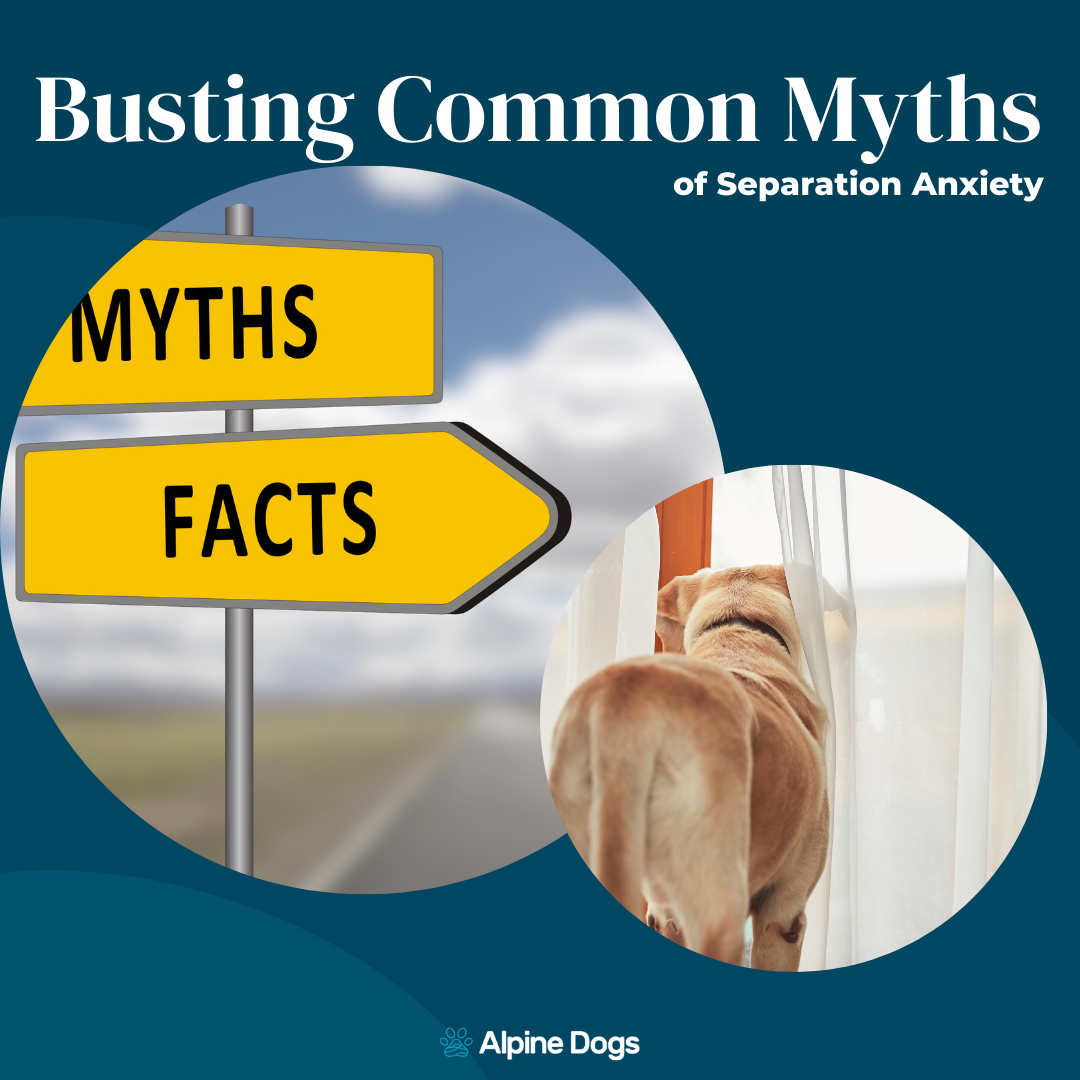Whether you’ve reached your separation anxiety training goal or are not quite there yet, you might be wondering what long-term success looks like for your dog. Will you be in training mode forever, or can you relax and rely on them to navigate alone time without support? The answer lies somewhere in between the two and can vary from dog to dog. Let’s get into it.
Phase One: Reaching Your Goal in Separation Anxiety Training
Resolving separation anxiety in dogs doesn’t necessarily mean they can all stay home alone for a full workday. The end goal for training is individual to your dog and depends on what you need in your day-to-day life. Your goal may be for your dog to relax alone for 8 hours or just for them to be able to stay home while you go out for dinner or run some errands. Whatever your goal, the first step is defining it and working on a systematic training plan to get there.
Your goals may also change as you work through training. While some dogs meet our initial goals with no problem, for other dogs, we have to compromise. It might be that your dog hits a wall with training and is just not comfortable with any longer than, say, 2 hours, or it might be that you no longer have the time, patience and resources to continue working on it. Whether continuing to chip away at your dog’s separation anxiety until you reach your goal or compromising at a shorter duration, either choice is fine and unique to you and your situation.
Reaching your goal isn’t only about duration. Another factor you should consider is the specific scenarios in which you need your dog to be comfortable alone. For example, your dog may be able to stay home alone for 4 hours in the daytime but struggle with even 30 minutes in the evening. If you’re working with a separation anxiety trainer on this, we will train these scenarios together, but some clients choose to focus solely on the times or contexts that they need most. You’ll need to think about what goals are the most important to you and which might be easier to manage. From there, you can decide how many different scenarios you really need your dog to be alone in before deciding when you’ve officially reached your goal.
Phase Two: Maintenance Mode in Separation Anxiety Training
Once you have reached your goal, it’s important to continue practising home alone time frequently. Like a muscle that becomes stronger with each workout, your dog’s ability to manage alone time is dependent on how often they are exposed to it. During the maintenance phase, you should practice leaving your dog home alone multiple times a week. Some of these absences should be at or closer to the longest duration your dog can comfortably manage and some can be shorter. I don’t recommend letting your dog get out of practice as much as possible.
At this point, you may start to wean yourself off of watching your dog on camera. While most separation anxiety pet parents like to check in on their dogs for peace of mind, there is no need at this point to be watching them the entire time. Make a point to enjoy your time out and not check in on your dog so much or at all. This can be really hard when we’re used to monitoring your dog closely, but it is an important step in your independence. A first step might be to try this at a time or in a context where you’re 99% sure your dog will be totally fine.
The Inconvenient Truth about Separation Anxiety Training
I’m now going to tell you about a few “inconvenient truths” you will want to be aware of when moving forward after separation anxiety training. The first of these truths is that separation anxiety can be prone to regression, especially when your dog encounters big changes to their life, family composition or health. Your dog is predisposed toward separation anxiety and always will be. Their alone time comfort may decrease if you bring home a new baby, move homes, lose or adopt a pet, or if they’re in pain or discomfort. If you’re concerned about the impact a big change will have on your dog, speak to your vet about how to best support them and stick to shorter durations while you navigate this. You can also reach out to your trainer for support if this happens!
Another inconvenient truth about separation anxiety is that the training won’t necessarily “generalize” well to new environments or contexts. Your dog may be comfortable for 6 hours alone at home but may become distressed if you attempt to leave them alone at a hotel or pet sitter’s home. These are situations that need to ideally be practised, and the duration alone decreased to 50% or less than your dog can handle at home to start, just in case.
In Conclusion…
Reaching your goal in separation anxiety training is an amazing accomplishment. You should be so proud of how far you’ve come – but there will likely be considerations for alone time moving forward, which vary between dogs. Remember to keep track of what impacts your dog most and set them up for success as much as possible. Reach out if you need support navigating your future together – I’m always here to talk it out.
